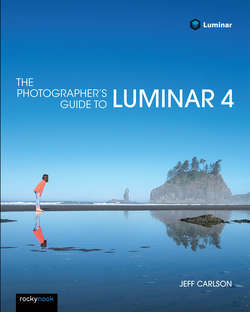Читать книгу The Photographer's Guide to Luminar 4 - Jeff Carlson - Страница 15
На сайте Литреса книга снята с продажи.
Hide/Show All Panels and Full Screen Preview
ОглавлениеThese commands are really just different ways to view your photo, but you’ll find yourself using them all the time as you edit—which is why I’m including them so high in the list of importance.
•Hide/Show All Panels (macOS): Press the Tab key to make all the interface elements except the toolbar go away, leaving just your image (Figure 1-6). The zoom level doesn’t change if you’re viewing the image at anything other than Fit to Screen, but you’ll see more of the photo. You can also choose View > Hide/Show All Panels/Toolbars.
FIGURE 1-6: Hide all the panels when you want to get a better view of your photo.
•Show All Toolbars (Windows): Under the Windows version, pressing the Tab key makes all interface elements appear if they aren’t visibile already. For example, if the Filmstrip was hidden, pressing Tab makes it appear. With all the elements onscreen, pressing Tab hides all of them except the toolbar and the image. You can also choose View > Show All Toolbars, which reads Hide All Toolbars when everything is visible.
•Full Screen Preview (macOS): Press the F key to hide all of Luminar’s tools and view the image at its largest size on your display, zoomed to fit. You can also choose View > Enter Full Screen Preview. This also activates Full Screen mode, which puts Luminar into its own screen space, hiding the menu bar and any other running applications. Press F again, or choose View > Exit Full Screen Preview, to go back to editing.
•Full Screen (macOS): Separately, you’ll also find the option to Enter Full Screen (choose View > Enter Full Screen, or press Command-Control-F), which does the same thing as Full Screen Preview, but retains the program’s interface items such as the sidebar. Move the mouse pointer to the top of the screen to reveal the menu bar. To get out of Full Screen mode, choose View > Exit Full Screen, or press Command-Control-F again.
